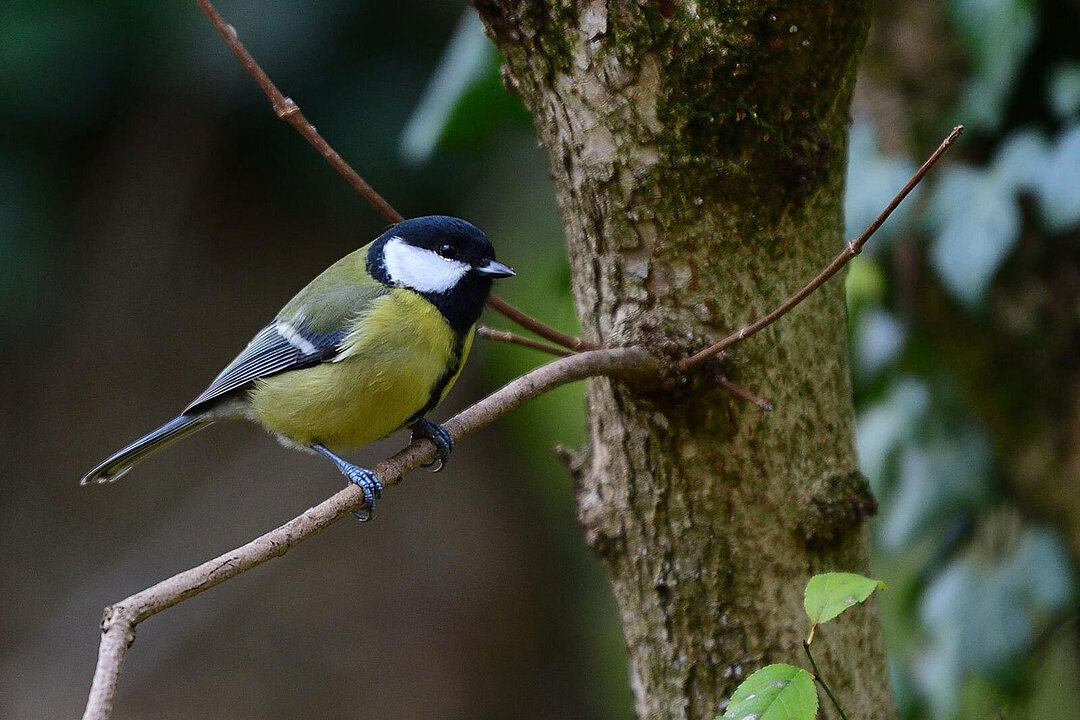![[Translate to English:] [Translate to English:] Eisvogel sitzend auf Ast.](/fileadmin/_processed_/2/6/csm_tierpark-hellabrunn-heimische-vielfalt-eisvogel_ffd845308d.jpg)
Every year in April, Naturschutz AG, Hellabrunn Zoo’s in-house conservation team, conducts a survey of the native bird species living in the park.
Since the first survey in 2015, more than 110 different species have been counted, mapped and identified on the zoo grounds. Naturschutz AG’s conservation work is supported by Hellabrunn trainees, conservation ambassadors and pupils visiting the Zoo School. Hellabrunn Zoo is set in the Isar Meadows, a beautiful conservation area on the banks of the Isar River, which has been designated a protected flora and fauna habitat by the European Union. In addition to the many animal enclosures, the zoo’s green landscape features trees such as ash, white elm, pedunculate oak, poplar and mighty white willow as well as hazel. These, along with all the other tree species at Hellabrunn, are not only beautiful to look at, but also provide a cosy home for a particular native group of animals - birds. More than 110 wild species have been spotted since 2015. And every year, the zoo’s conservation team discovers amazing ways native birds are adapting to life in the park, such as the pair of middle spotted woodpeckers living in a tree hole in the elk enclosure. Visitors can also discover many other feathered friends on a tour of the zoo, including great tits, nuthatches, chaffinches, greenfinches and blue tits. In the Mühlendorf village, the traditional buildings provide a suitable breeding site for sparrows and swallows
Naturschutz AG’s bird survey
This year’s survey by the Naturschutz AG was also conducted as part of a trainee exercise to record native bird species living on the zoo grounds and those passing through. To carry out the research, the zoo grounds is divided into four separate areas, each of which is monitored by a Naturschutz AG bird expert along with two to three trainees. Due to fluctuating weather conditions caused by rain, wind and heavy clouds, this year the team were only able to detect 41 bird species (annual survey average is 45 species). Occasional feathered guests were also recorded, some of whom have settled in the zoo on a short-term basis. These include European serins, bullfinches, spotted flycatchers and even rare kingfishers. For some time, there has also been a pair of goldeneyes living in the pond and a black kite has been spotted over the zoo grounds.
Nesting aids help birds find breeding sites
For zoo director Rasem Baban, the work of the Naturschutz AG conservation team is an important part of the zoo‘s commitment to preserving and monitoring biodiversity: "Unfortunately, we are increasingly seeing how the decline in insects is impacting the breeding success of various bird species. We are therefore delighted with the results of the bird survey and see them as confirmation of our efforts to conserve many bird species. We have installed more than 200 nesting boxes to help the birds find suitable breeding sites. In addition, we have also set up a tub of clay outdoors to give the swallows breeding at the zoo better access to this building material. Last year, we were also able to witness the first breeding successes in the nesting walls of the kingfisher – a species that is threatened with extinction in Bavaria.“
In episode 82 of the Hellabrunn podcast Mia San Tier, ornithologist Manfred Siering talks about the bird species living on the zoo grounds and along the Isar River, bird diversity in the region, and how you can identify the various species: https://www.hellabrunn.de/podcast.
